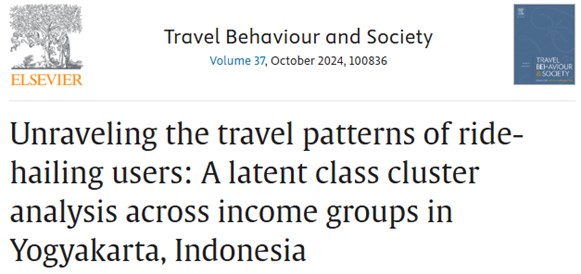Muchlis Muchlisin, Jaime Soza-Parra, Yusak O. Susilo, Dick Ettema
Abstract
This study provides valuable insights into ride-hailing trip patterns among various income groups, including lower-income groups and those living below the poverty line, groups often overlooked in previous research. Using latent class cluster analysis (LCCA) based on a survey in Yogyakarta Province, Indonesia, we examine how variations in trip pattern characteristics are influenced by socio-demographics, household characteristics, and travel-related attitudes toward ride-hailing usage. Our results establish that six distinct clusters representing different ride-hailing travel patterns can be identified. We found dominant clusters for short and less expensive trips using motorcycle-based ride-hailing services (RH MC). In contrast, longer and more expensive trips are associated with car-based ride-hailing (RH CAR). Moreover, ride-hailing plays an important role in essential trips such as returning home, commuting, and maintenance activities, highlighting its importance in addressing transportation challenges, particularly in regions with limited public transportation access. Lower-income individuals and those living in poverty tend to use ride-hailing primarily for shorter and cheaper trips with RH MC, while those from higher-income brackets utilize it for a broader range of purposes. These findings highlight the diverse effects of ride-hailing across income groups and suggest the potential for ride-hailing to enhance accessibility for low-income individuals in Indonesia. We propose policy recommendations to alleviate transport poverty and enhance transport equity in light of these findings.
